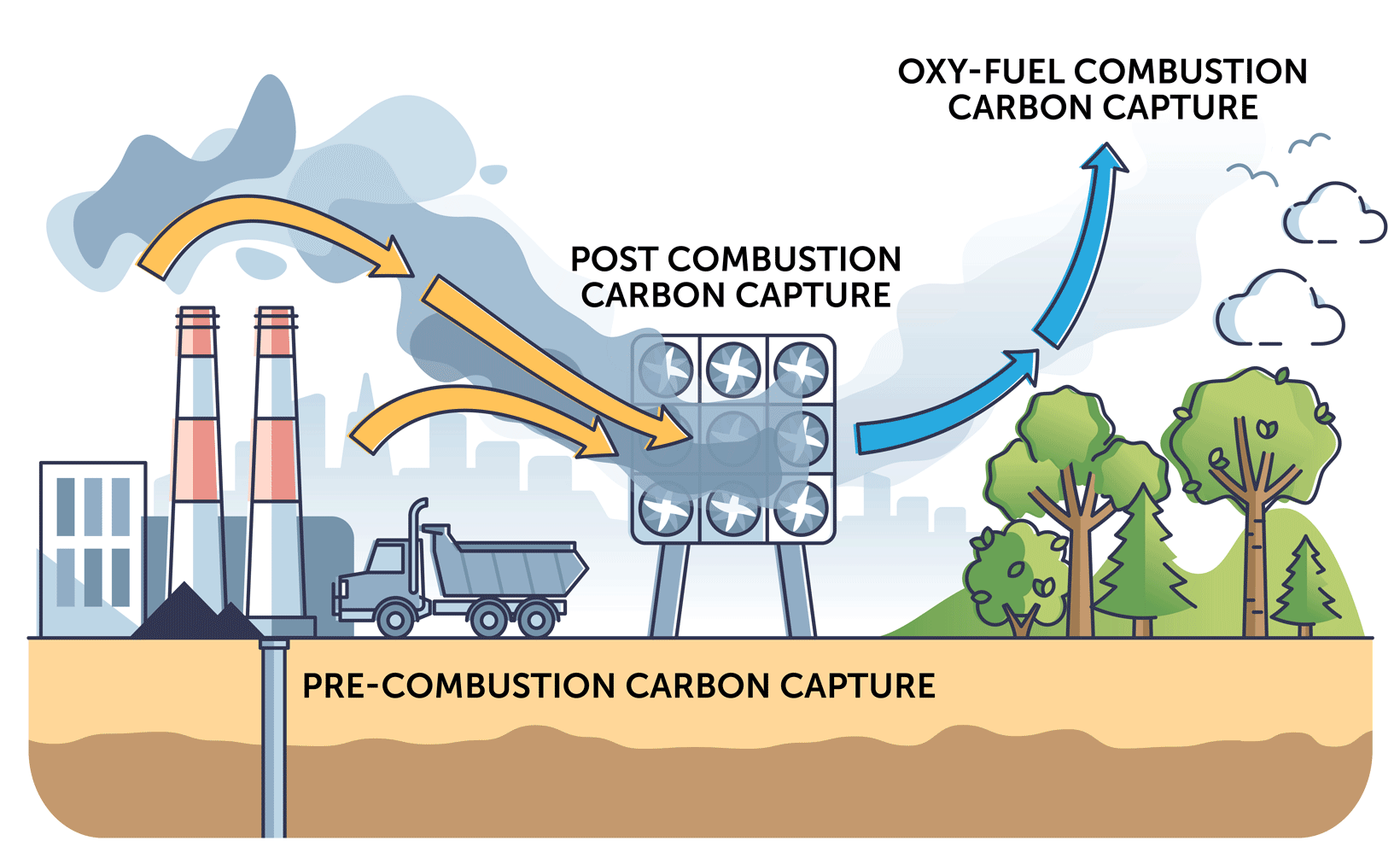Carbon capture technology has its critics, but it can radically reduce emissions in this one industry
World leaders gathered Nov. 30 for the annual UN climate meeting known as COP28. A key climate solution that was discussed was carbon capture, utilization, and storage (CCUS), a technology that could reduce greenhouse gas emissions from hard-to-decarbonize sectors.
COP28’s president, Sultan Ahmed Al-Jaber, who is both the COP president and CEO of UAE oil giant Abu Dhabi National Oil Co. (ADNOC), has been campaigning for carbon capture technologies as a way to reduce emissions.
A month before, the U.S. enacted the Inflation Reduction Act, which increased federal tax incentives for carbon capture projects. The goal is to stimulate more investment in carbon capture technologies that were previously unprofitable.
How does CCUS work?
CCUS refers to three main technologies: 1. Post-combustion carbon capture is the most common technology used today. It collects smokestack emissions, called flue gases, before they can be released into the air. 2. Pre-combustion capture, which removes carbon dioxide from the fuel source before its fully burned. 3. Oxy-fuel combustion capture, which is when fuel is burned in an atmosphere of nearly pure oxygen, producing highly concentrated carbon dioxide that is easier to collect.
In sum: Those technologies work to capture CO2 generated by burning fossil fuels before emissions are released to the atmosphere.
Capture generally takes place at large stationary sources of CO2, including power plants, and cement, steel or chemical facilities. Simply stated, most current carbon capture projects use a liquid to chemically remove, or separate, CO2 from other gases produced. Then the CO2 is compressed and transported via pipelines, road transport or shipped offsite for storage. Finally, the CO2 is injected into rock formations deep underground for permanent storage.

CCUS is touted as an essential technological tool required for a low carbon future. Nearly all the models in the 2022 Intergovernmental Panel on Climate Change report include carbon capture to keep the earth to 1.5 Celsius degrees of warming. Regardless of these models and the political fanfare behind CCUS, there are many critiques that must be considered from both an environmental and investor perspective.
IS CCUS effective?
From an environmental perspective, many organizations are skeptical of its use, arguing that while carbon capture can decarbonize hard-to-abate industries, the actualized carbon capture is limited. According to Global Status of CCS 2022, referenced in a May 2023 Bloomberg article, “Despite its 50-year history, all the CCS plants deployed globally capture only about 40 million tons of CO2 each year. That’s less than 0.1% of global greenhouse-gas emissions.”
The IEA reports a similar metric saying that in 2022, 40 commercial capture facilities are in operation globally, and these facilities have an annual capture capacity of approximately 45 MT CO2. According to Brad Page, CEO of Global CCS Institute, “This must increase at least 100-fold by 2050 to meet the scenarios laid out by the IPCC.”
Returning to the topic of COP28 President Al-Jaber and his oil company ADNOC, Global Witness said that “it would take his oil company over 340 years to remove the CO2 it will produce by 2030.”
Calamos’ view
Calamos’ Sustainable Equities Team holds a cautious outlook on the role CCUS will play in lowering emissions from traditional fossil fuel production and generation facilities. This hesitation stems from CCUS’s energy intensiveness, high costs and availability of other low-carbon options such as wind and solar.
Yet we do believe there is an area, the industrial sector, which accounts for one-quarter of CO2 emissions and 40% of global energy demand, where CCUS can play a valuable role in reducing emissions. The industrial sector is involved in the production of materials such as cement, steel and chemicals, areas that are highly carbon intensive yet do not currently have other decarbonization options available (i.e. wind or solar).
According to the IEA, in the Clean Technology Scenario (CTS), more than 28 billion tonnes of CO2 is captured from industrial facilities in the period to 2060. In this scenario, CCUS delivers 38% of the emissions reductions needed in the chemical subsector and 15% in both cement, iron and steel.
Recognizing this growth opportunity, the Sustainable Equities Team has identified companies, such as Air Liquide AIQUY , as being highly innovative and fundamentally competitive in this space. Air Liquide’s Cryocap technology involves the use of extremely low temperature to separate gases. For the cement industry, Cryocap FG can achieve CO2 capture rate of 85 to 95%, while Cryocap Steel achieves a CO2 capture rate of 80 to 95%.
In April 2022, Air Liquide and EQIOM (a subsidiary of CRH CRH , the leading building materials business in the world) partnered on a project titled “K6” with the aim to transform EQIOM’s Lumbres cement plant into one of the first carbon-neutral cement plants in Europe.
Beth Williamson is vice president, head of sustainable equity research and associate portfolio manager at Calamos Investments.
Read next: Seven need-to-know impact investing and sustainable finance stories for Jan. 5



